Guidelines for the 5 Whys Analysis
Step 1: Form a problem statement
5 min
Ask your team (if you are not doing it alone) what problem you're about to analyze. Put responses on digital sticky notes.
Be ready for intentional and unintentional bias in the answers you discuss here. Make sure the room doesn't try to steer away from an uncomfortable truth, or try to reach an easy consensus.
If there isn't one clear problem, you'll need to agree on which problem to work on—which on its own should be pretty revealing! Once you've agreed, write the succinct problem statement on the board, using another color of sticky notes or text.
Step 2: Basic 5 whys analysis
15 min
Ask the questions: "Why is / are / does [your problem statement]?" Write your answer(s) below the problem statement. These become your second problem statement.
Ask again: "Why is / are / does [your second problem statement]?" Write those responses below the second row.
You get the idea. Keep going until you've asked "why" five or more times, even if it feels awkward and facetious. Most of the time we don't think hard enough about the factors behind problems, so keep pushing until you feel like you're at the root of the problem.
Step 3: Further analyze the root cause
10 min
You've got a good understanding of the problem by this point. Now it's time to pick it apart.
As a team, discuss your line of reasoning. Odds are, you've traced an acute problem to a much larger problem space, or a much harder problem to tackle. Listen carefully between the lines in your team's discussion—make sure all are agreed that you've locked onto the right problem.

Atlassian
Atlassian is a collaboration software company powering teams around the world. With the help of products like Jira, Trello, Confluence, and more, teams of any size can plan, track, build, and work better together. Learn more about their tools, or about the Atlassian Team Playbook (a free resource), at www.atlassian.com.
Categories
Similar templates
Dichotomous Key Template
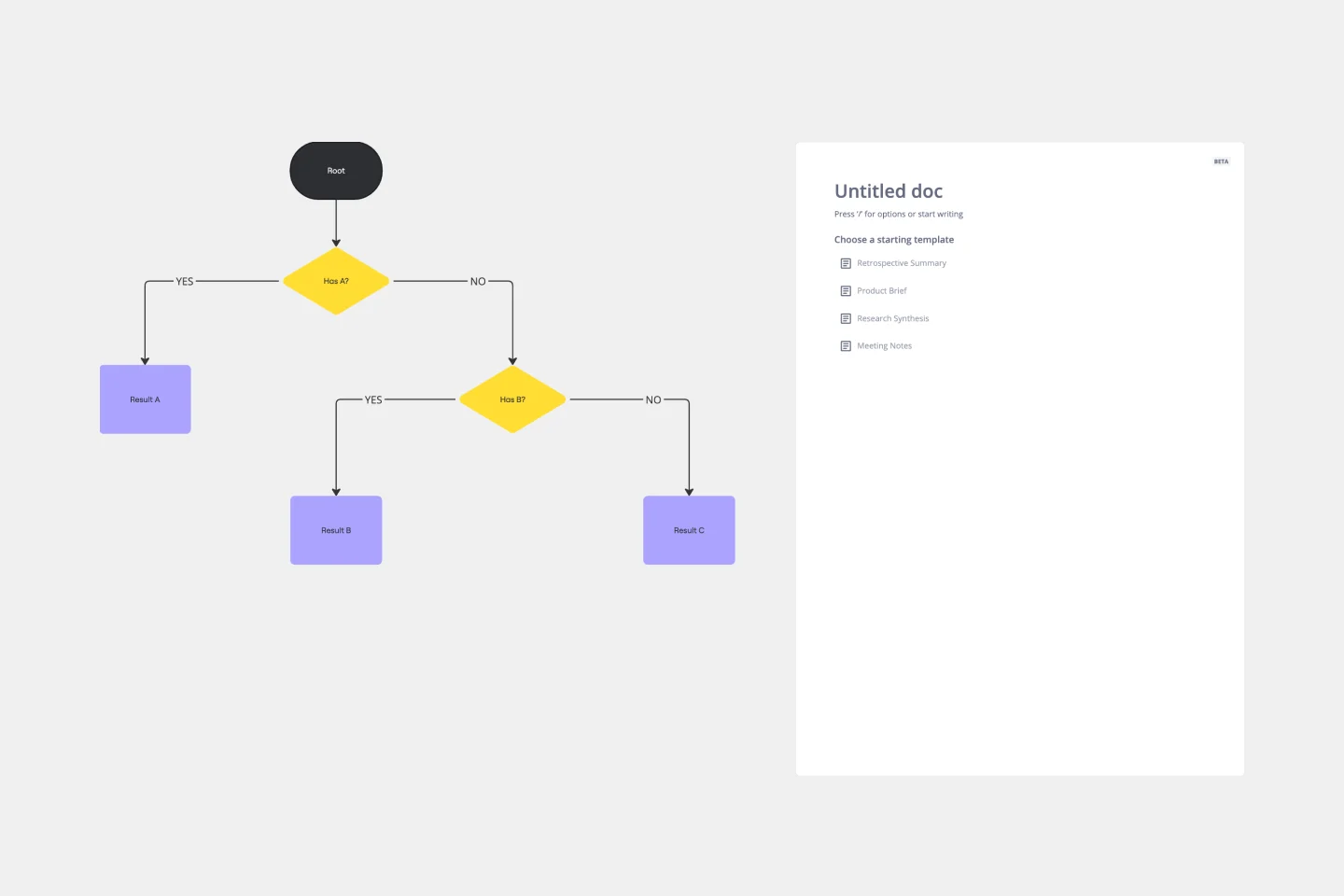
Dichotomous Key Template
The Dichotomous Key Template stands out as an exceptional tool for simplifying complex classification processes, significantly enhancing learning experiences. Breaking down intricate subjects into a series of binary decisions transforms how information is absorbed and understood. This systematic approach not only aids in retaining intricate details but also makes the learning process more engaging and interactive. Whether for educational purposes or professional use, the template’s design fosters a deeper comprehension of the subject matter, allowing learners and professionals to navigate complex scenarios with clarity and ease.
3x3 Prioritization Method Template
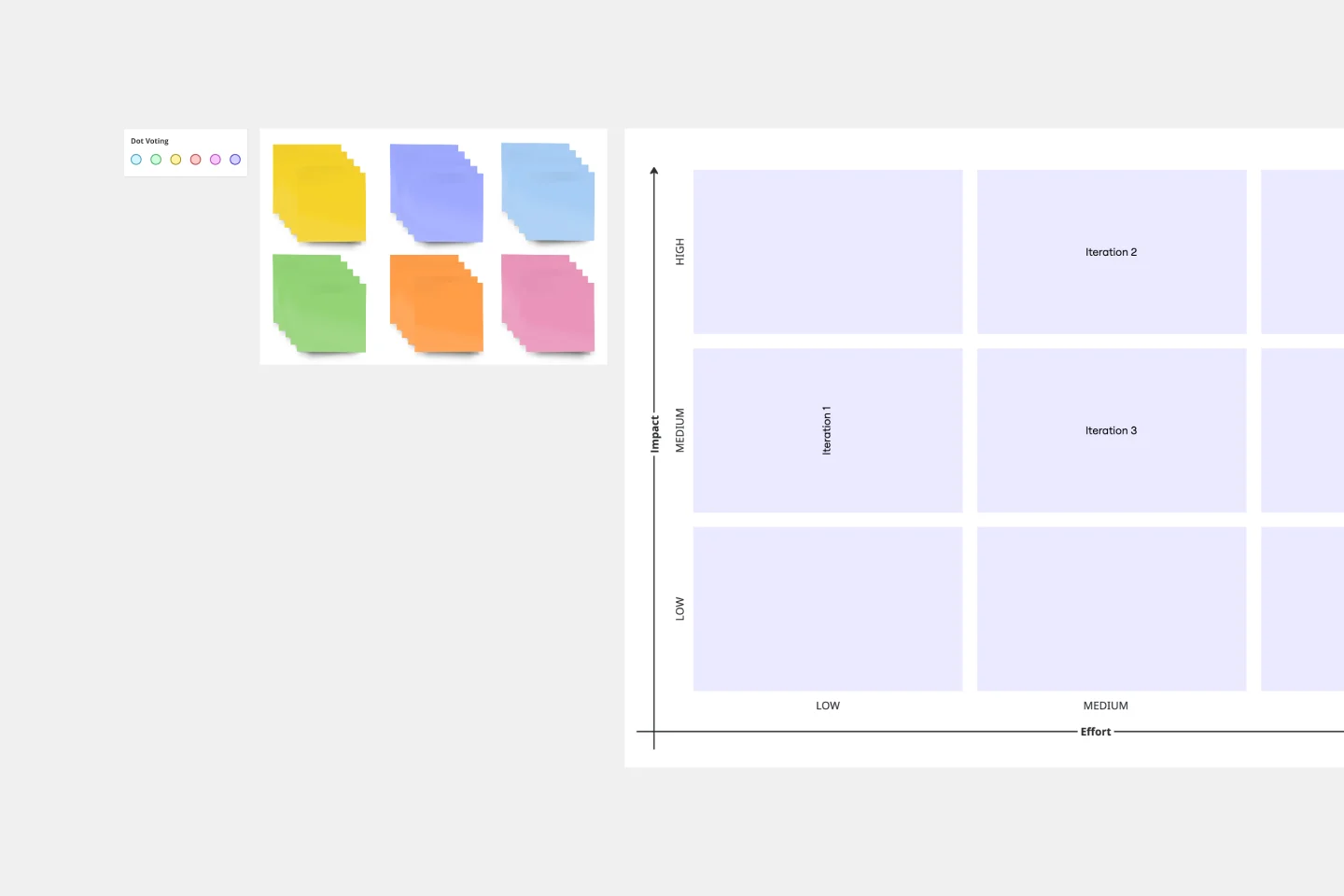
3x3 Prioritization Method Template
It’s all about assessing a task or idea, and quickly deciding the effort it will take and the potential impact it will have—ranked low, medium, or high. That’s what the 3x3 prioritization method does: Help teams prioritize and identify quick wins, big projects, filler tasks, or time-wasters. With nine bucket areas, it offers slightly greater detail than the 2x2 Prioritization Matrix (or Lean Prioritization Method). It’s easy to make your own 3x3 prioritization matrix—then use it to determine what activities or ideas to focus on with your valuable resources.
Matrix Org Chart
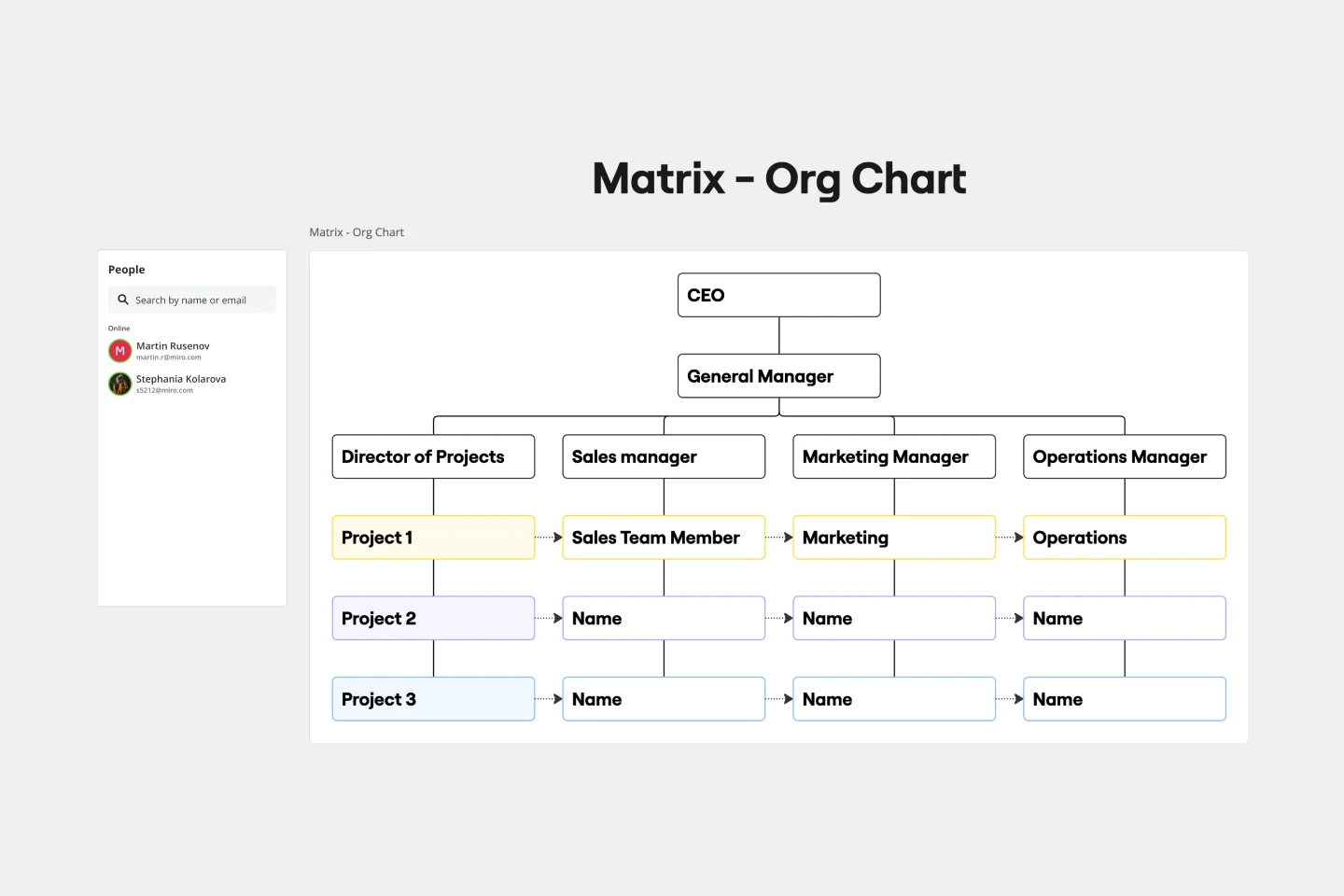
Matrix Org Chart
The matrix org chart template organizes teams efficiently and promotes effective communication. It is an essential tool for businesses that require complex decision-making capabilities and rapid response times. With this template, people can easily visualize their roles, responsibilities, and relationships within the organization, leading to improved alignment and performance.
Burndown Chart Template
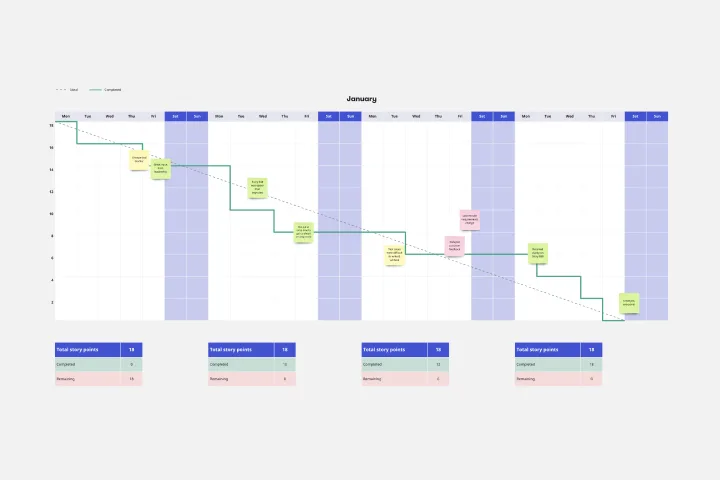
Burndown Chart Template
Whoa whoa whoa, pace yourself! That means knowing how much work is left—and, based on the delivery date, how much time you’ll have for each task. Perfect for project managers, Burndown Charts create a clear visualization of a team’s remaining work to help get it done on time and on budget. These charts have other big benefits, too. They encourage transparency and help individual team members be aware of their work pace so they can adjust or maintain it.
How Might We Template
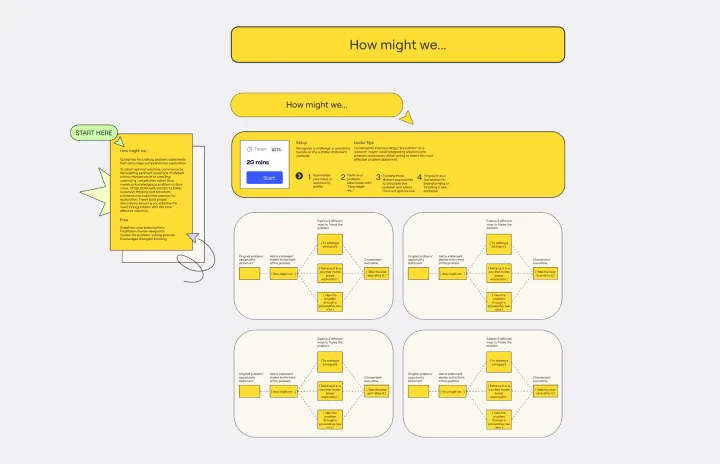
How Might We Template
It's crucial to ask the right questions to find the best solutions. Skilled critical thinkers can uncover the underlying complexities of a problem instead of just accepting it at face value. One way to encourage this type of thinking is by using statement starters, such as the How Might We Template. These tools can help you explore more open-ended problems and have more productive discussions, ultimately leading to the most effective solutions.
Likert Scale Template

Likert Scale Template
It’s not always easy to measure complex, highly subjective data — like how people feel about your product, service, or experience. But the Likert scale is designed to help you do it. This scale allows your existing or potential customers to respond to a statement or question with a range of phrases or numbers (e.g., from “strongly agree” to “neutral,” to “strongly disagree,” or from 1 to 5). The goal is to ask your customer some specific questions to turn into easy-to-interpret actionable user insights.
Dichotomous Key Template

Dichotomous Key Template
The Dichotomous Key Template stands out as an exceptional tool for simplifying complex classification processes, significantly enhancing learning experiences. Breaking down intricate subjects into a series of binary decisions transforms how information is absorbed and understood. This systematic approach not only aids in retaining intricate details but also makes the learning process more engaging and interactive. Whether for educational purposes or professional use, the template’s design fosters a deeper comprehension of the subject matter, allowing learners and professionals to navigate complex scenarios with clarity and ease.
3x3 Prioritization Method Template

3x3 Prioritization Method Template
It’s all about assessing a task or idea, and quickly deciding the effort it will take and the potential impact it will have—ranked low, medium, or high. That’s what the 3x3 prioritization method does: Help teams prioritize and identify quick wins, big projects, filler tasks, or time-wasters. With nine bucket areas, it offers slightly greater detail than the 2x2 Prioritization Matrix (or Lean Prioritization Method). It’s easy to make your own 3x3 prioritization matrix—then use it to determine what activities or ideas to focus on with your valuable resources.
Matrix Org Chart

Matrix Org Chart
The matrix org chart template organizes teams efficiently and promotes effective communication. It is an essential tool for businesses that require complex decision-making capabilities and rapid response times. With this template, people can easily visualize their roles, responsibilities, and relationships within the organization, leading to improved alignment and performance.
Burndown Chart Template

Burndown Chart Template
Whoa whoa whoa, pace yourself! That means knowing how much work is left—and, based on the delivery date, how much time you’ll have for each task. Perfect for project managers, Burndown Charts create a clear visualization of a team’s remaining work to help get it done on time and on budget. These charts have other big benefits, too. They encourage transparency and help individual team members be aware of their work pace so they can adjust or maintain it.
How Might We Template

How Might We Template
It's crucial to ask the right questions to find the best solutions. Skilled critical thinkers can uncover the underlying complexities of a problem instead of just accepting it at face value. One way to encourage this type of thinking is by using statement starters, such as the How Might We Template. These tools can help you explore more open-ended problems and have more productive discussions, ultimately leading to the most effective solutions.
Likert Scale Template

Likert Scale Template
It’s not always easy to measure complex, highly subjective data — like how people feel about your product, service, or experience. But the Likert scale is designed to help you do it. This scale allows your existing or potential customers to respond to a statement or question with a range of phrases or numbers (e.g., from “strongly agree” to “neutral,” to “strongly disagree,” or from 1 to 5). The goal is to ask your customer some specific questions to turn into easy-to-interpret actionable user insights.